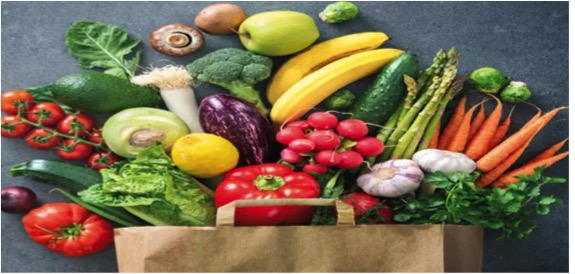India figures among the few countries that have been able to evolve their food systems for a broader set of outcomes by unlocking the potential of small and medium-sized enterprises, a new WEF report said on Monday.
The World Economic Forum report, released here on the first day or its Annual Meeting 2023, said the countries that tackle food crisis can boost jobs, health and nature and also meet net zero goals better.
It listed India, Ghana and Vietnam as among the countries that have been able to evolve their food systems by unlocking the potential of SMEs, particularly those that are farmer-allied and operating in local food chains.
Food systems, when transformed, can help solve some of the world’s toughest problems, from climate change to resilient livelihoods, the report said.
“Transforming food systems provide healthy and nutritious diets and dignified jobs for farmers and producers. This report shows how economic development with environment protection supports communities in climate adaption and mitigation efforts,” Gim Huay Neo, Managing Director of the WEF’s Centre for Nature and Climate, said.
The report, prepared in collaboration with Bain & Company, presented repeatable models from seven ‘early mover’ countries in Africa, Asia, the Americas and Europe whose performance has been comparatively strong and whose examples and lessons are widely relevant.
“Depending on the country context, different pathways could be adopted to transform our agri-food systems for improved food security and nutrition and assuring sustainability,” Maximo Torero Cullen, Chief Economist at the UN Food and Agriculture Organization (FAO), said.
“When food fails, everything fails,” Geraldine Matchett, Co-Chief Executive Officer and Chief Financial Officer of Royal DSM, and Co-Chair of the CEO Alliance on Food, Nature and Health, said.
In India, the report said, a multi-decade programme grounded in support for smallholder farmers and dairy enterprises has helped transform dairy into India’s largest agricultural commodity, accounting for roughly one-third of rural incomes and 10 per cent of total caloric intake in 2019.
“This transformation began with public programmes supporting the formation of village-level cooperatives, extension services and credit. In time it evolved to cultivate a domestic industry that has a number of successful, tech-enabled, vertically integrated enterprises with farmer-allied sourcing models,” it added.
Sector transformations in Vietnam and Ghana have followed much the same path, WEF said.
Dairy is the single largest agricultural commodity in India, accounting for 5 per cent of GDP and an important foundation of nutrition.
India is now the world’s largest milk producer and 70 per cent of its milk is produced by its 80 million smallholder farmers with herds of fewer than 10 animals.
As the country continues to urbanise, city dwellers are spending more on dairy and consuming more processed dairy products that carry higher margins.
Between 2002 and 2021, the sector’s value addition doubled, registering nearly USD 15 billion in 2020.
Source : Business Standard Jan 16 2023
(Only the headline and picture of this report may have been reworked by the Business Standard staff; the rest of the content is auto-generated from a syndicated feed.)

